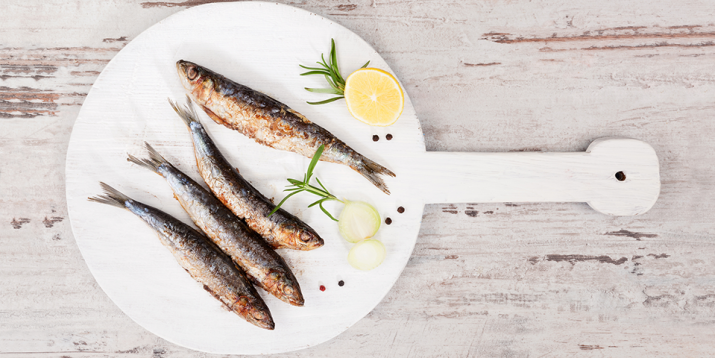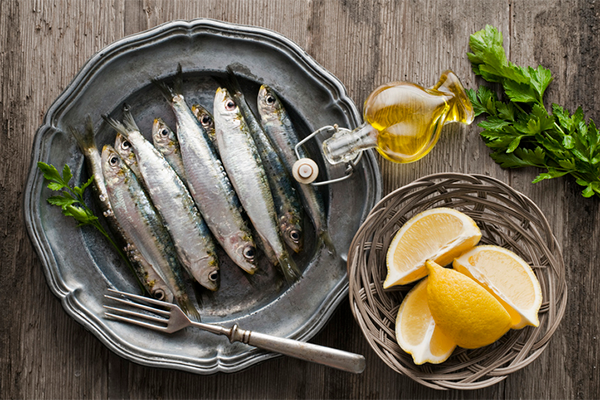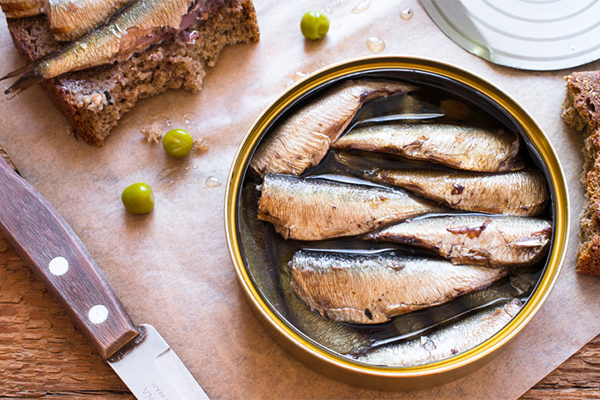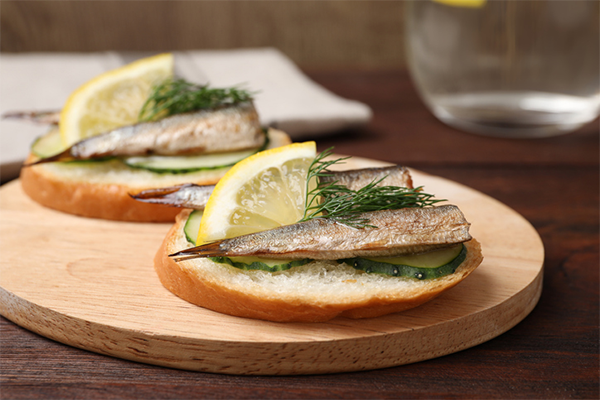Why Sardines Are the Superfood of the Sea

Sardines have become something of an “it” fish in recent years for their extraordinary protein and omega-3 content, along with their wealth of other nutrients.
But they can be intimidating to eat because of their taste (fishy) and texture (also, fishy).
That said, the benefits of sardines are so vast that it’s worth introducing this nutritional powerhouse into your diet. We’ll explain…
What Kind of Fish Is a Sardine?
Sardines hail from the herring family, and derive their name from the Mediterranean island of Sardinia. They’re known as an oily, or fatty, fish, owing to their high levels of healthy omega-3 fatty acids eicosapentaenoic acid (EPA) and docosahexaenoic acid (DHA).
Most commonly cooked or smoked and then canned in oil, sardines enjoyed a resurgence during the pantry-food scramble of the Covid-19 pandemic, and are considered among the world’s most sustainable animal proteins.
Are Sardines Good for You?

Sardines are famously high in protein and omega-3 fatty acids — among a host of other nutrients — making them healthy as a snack or as the protein in a meal.
They’re also among a minority of foods that are naturally high in vitamin D. Sardines can be high in sodium, though, so those with high blood pressure should be mindful.
Sardines nutrition
A 3.75 oz. can of sardines contains the following:
- Calories: 191
- Carbohydrates: 0 g
- Fiber: 0 g
- Fat: 11 g
- Cholesterol: 131 mg
- Saturated fat: 1 g
- Protein: 23 g
- Sodium: 282 mg
- Potassium: 365 mg
Are Sardines Better for You Than Tuna?
Of the most popular forms of each food, sardines in oil offer 32 percent more protein than tuna canned in water. They are also higher in omega-3s, as well as a slew of other nutrients, including calcium, iron, magnesium, potassium, and zinc.
Sardines are also considered a low-mercury fish, something that can’t generally be said about canned tuna. Ironically, the less expensive tuna option — light, or skipjack, tuna — is lower in mercury than its solid white, or albacore, counterpart.
Anchovies vs. Sardines
Aside from their relative size, sardines and anchovies don’t have all that much in common. They’re completely different species, have distinctly different tastes, and are found in totally different waters.
Anchovies, however, are even higher in protein per 100 g than sardines, and are richer in iron, magnesium, potassium, and zinc. But they also contain more than 10 times the sodium of sardines in their most common form, making them a salt bomb even for those with healthy blood pressure. That’s why they’re typically used sparingly (e.g. as a pizza topping).
5 Benefits of Sardines

1. Protein
Sardines are protein powerhouses, clocking in at 23 g of protein in each 3.75-oz can. Josh Holland, a fitness coach with a focus on nutrition who has trained with Madonna, praises the sardine for its protein-rich punch.
“I consider them a ‘superfood’ snack because they’re complete with proteins and healthy fats and they’re low-carb,” he says. “Plus, they’re convenient. I can put a container of sardines in a backpack and go hiking and, if I get hungry, I can grab that instead of having to prepare something.”
2. Healthy fats
Sardines are well-known for their omega-3 fatty acids. These “good” fats are associated with healthy cardiovascular function, vision, and cognition, among other perks.
3. Vitamin D, and then some
Few foods contain vitamin D naturally, which is why so many others, like milk and orange juice, are fortified with it. But sardines are a top-10 source of vitamin D, according to the NIH.
Vitamin D supports bone health by promoting calcium absorption, is associated with healthy blood pressure and heart health, and aids immune function. Sardines also provide minerals including calcium, iron, magnesium, phosphorous, potassium, and zinc.
4. Low-mercury fish
According to the FDA, sardines boast one of the lowest concentrations of mercury (a toxin) when it comes to fish. The fact that sardines are, themselves, low in mercury results in a healthier catch for us.
5. It’s a “whole” whole food
Sardines are one of the few animals that we, as humans, can consume in their entirety. “The fact that you can get it as a whole fish and eat it one chew? You bite into it and get all the organs along the way. If you’re eating salmon or tuna, you’re just getting the muscle meat. With a sardine, you’re also getting the organ meat,” Holland adds.
How to Eat Sardines
Kevin O’Connor, a chef, author, olive oil sommelier, and forager, is an enthusiast when it comes to sardines.
“What comes to mind when I first think about the greatness of sardines has got to be the flavor,” he says. “The little guys are packed with such great briny, salty, oceanic goodness that you don’t get from more popular fish, like tuna. The oiliness is something to be embraced, especially knowing that that fats in sardines are good fats.”
He offers a recipe for beginners, one that serves to enhance the simplicity of the sardine.

“Preserving sardines in extra virgin olive oil, garlic, and herbs isn’t just a way for me to process my catch; it provides me with a range of healthy fats in one jar,” O’Connor says. “One of my favorite ways to eat sardines (or ‘dinos’ as I call them at home) is actually the same way I won over a sardine nay-sayer.”
- He starts with sardine filets, preserved in a mixture of extra virgin olive oil, pink peppercorns, fennel seed, garlic, and lemon thyme.
- Next, he spreads the sardines on a fresh baguette before smothering them in an aioli made with the excess “preservation” mixture.
- The dish is topped with a salad of herbs (including: parsley, tarragon, dill, and frisée) that is garnished with a squeeze of Meyer lemon and an additional drizzle of olive oil.
“We stood there in my kitchen, late at night, and the two of us devoured the jar of dinos and a whole loaf of bread,” O’Connor recalls. “We only stopped after the decimation to clean the aioli and olive oil off of our hands and faces.”
Another option? Hiding the flavor. Holland has some advice for the newbie.
- First, he recommends cooking the fish, because “When sardines can embrace that little bit of kick rather than that ‘knock your teeth out’ taste, they can be nice.”
- Second, O’Connor says to cut the sardine into pieces.
- Third, he says to add the fish into a dish, suggesting “a paella or a vegetable medley or a gumbo or a salad.”
And, if that doesn’t work, O’Connor shares a recipe for a veggie-based soup that he recommends to his clients in New York.
“Start with a very small amount, maybe one or two sardines instead of a whole can,” he advises. “Throw them into a blender with some steamed or mixed vegetables plus a bit of grass-fed butter. Butter has a nice strong taste. Maybe add some salt/pepper and some cayenne for flavor. Make yourself a nice little soup or purée and you can almost never taste the sardines.”
